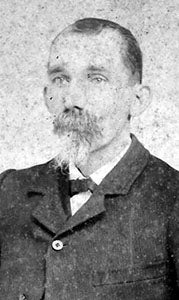The murder of Grac Jones: Chapter 16
Published 9:29 pm Wednesday, August 12, 2015
Community reactions
EDITOR’S NOTE: On the evening of Oct. 26, 1908, five shots rang out in the village of Holland. Tiberius Gracchus “Grac” Jones lay dying on the ground inside the gate leading to his home. “They have killed me and killed me for telling the truth,” he told a friend as his life ebbed away. This is the 16th in a series of articles about the Jones murder case. Suffolk historian Kermit Hobbs Jr. compiled the 18-part series from personal accounts, newspaper stories and court records he has studied from the period.
By Kermit Hobbs Jr.
Special to the News-Herald
Back in the town of Holland, hard feelings reigned. The majority of the population still believed that Sam Hardy was innocent, raising the question as to who really did kill Grac Jones.
The person who would allow Sam Hardy to die for his own evil actions would be guilty of two murders, both Jones and Hardy. Suspicions were directed against a number of people, and the stress took its toll, sometimes in surprising ways.
In January 1910, Kelly Rawles, a relative of Mrs. Augustus Holland, the defense’s star witness, walked into a Holland hardware store, pulled out a knife and slashed his own throat. He was overpowered and prevented from injuring himself more seriously.
Rawles was then taken to jail in Suffolk, where he pleaded in vain to be placed in the cell with Sam Hardy. Rawles was regarded as somewhat feeble minded, and there was no reason at all to suspect that he had murdered Grac Jones.
One person who was regarded as a likely suspect was Sam Pete Holland. Holland had worked for Sam Hardy in his store, and it was he who had originally purchased the shotgun that presumably was used to kill Grac Jones.
Some people believed that it was out of a guilty conscience that Holland had tried to buy another identical shotgun. Perhaps he had planned to use it to somehow divert suspicion away from Sam Hardy. Holland’s bungled efforts and erratic testimony had resulted in his own arrest for perjury.
Grac Jones, as he was dying, had accused “Luke” of being his attacker. The only Luke in town was I.A. Luke, mayor of Holland, and he was one of the heirs who eventually benefited from Zachary Holland’s estate. Some people even believed that Luke and Sam Pete Holland were both involved in the murder.
Grac Jones’ brother, Bunyan, claimed to have in his possession a letter indicating that Sam Pete Holland was blackmailing Luke for some presumed connection with the murder. Bunyan Jones further stated that Luke warned Holland to get out of town because “his life was in danger.”
Indeed, in the early morning hours of March 27, 1910, Sam Pete Holland was run over by a train on the railroad tracks behind Sam Hardy’s store. Some believed Holland had committed suicide because he had murdered Grac Jones and his friend, Sam Hardy, would die for it.
Holland’s death was officially ruled a suicide, but many people believed that Holland was already dead when the train hit him. They believed he was killed because he “knew too much.” The question of who might have killed him only deepened the mystery.
Dr. N.G. Newman, pastor of Holland Christian Church, later wrote that yet another unnamed suspect drank himself to death in 1912.
None of these suspicious activities brought any benefit to Sam Hardy as he awaited his appointment with destiny.







